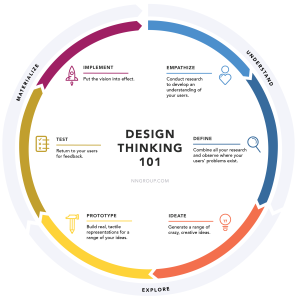What Are the Key Principles of Iterative Design?
Principles of Iterative Design
Building a digital product that stands out and gains traction in today’s overcrowded marketplace is challenging. Even with the best product development process, it can be difficult to create a product that will satisfy end-users and become commercially successful. One approach that is often used is the iterative design model. This process focuses on iterating through prototyping, testing and refining the project based on feedback from users.
However, not all Iterative design projects are created equal and a clear understanding of what makes iterative design a success is critical to getting the most out of this product development methodology. In this article, we will discuss what are the key principles of iterative design, the phases that comprise iterative design and how this process should be executed to ensure the most effective outcomes.

Iterative design is a method of product creation that involves a steady refinement of the design based on user testing and other evaluation methods. Ideally, each design iteration should improve the usability of the product over the previous design. To facilitate this, it is important to measure the usability of each iteration using a standard set of test tasks.
What Are the Key Principles of Iterative Design?
A number of different methods exist for measuring the performance of a user interface design and these can be adapted to any type of product or application. Several studies have been conducted to provide an empirical basis for comparisons of these methods and to identify the factors that influence them. The studies include a comparative analysis of the results obtained by the four methods and an examination of how these results can be modified to account for the effects of design iterations on usability.
The results of these experiments show that the iterative design model can yield significant improvements in overall usability, although there is a tendency for each iteration to “level off” after a certain point. This is probably due to the fact that some changes that are considered improvements in one iteration may turn out not to be so in subsequent iterations. This effect can be partially offset by the use of a standard set of test tasks that are used for all iterations, which helps to normalize the differences in usability between the various iterations.
While iteration based on user feedback can help identify usability problems, it is not always possible to identify how those issues should be fixed. Therefore, it is important to include interaction designers in the iteration process so that they can guide the team through the design process in a way that will result in products that feel intuitive to users.
Iterative design is a great way to optimize a product for market release, but it is not without its limitations. It is important for teams to know when to stop iterating and to have a solid plan in place for creating an effective product that will be both satisfying to end-users and profitable for their businesses. In addition, it is important to work with a product developer that understands the value of the iterative design process and can keep costs low and manufacturing times quick.